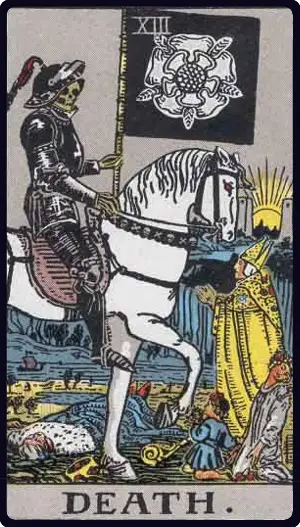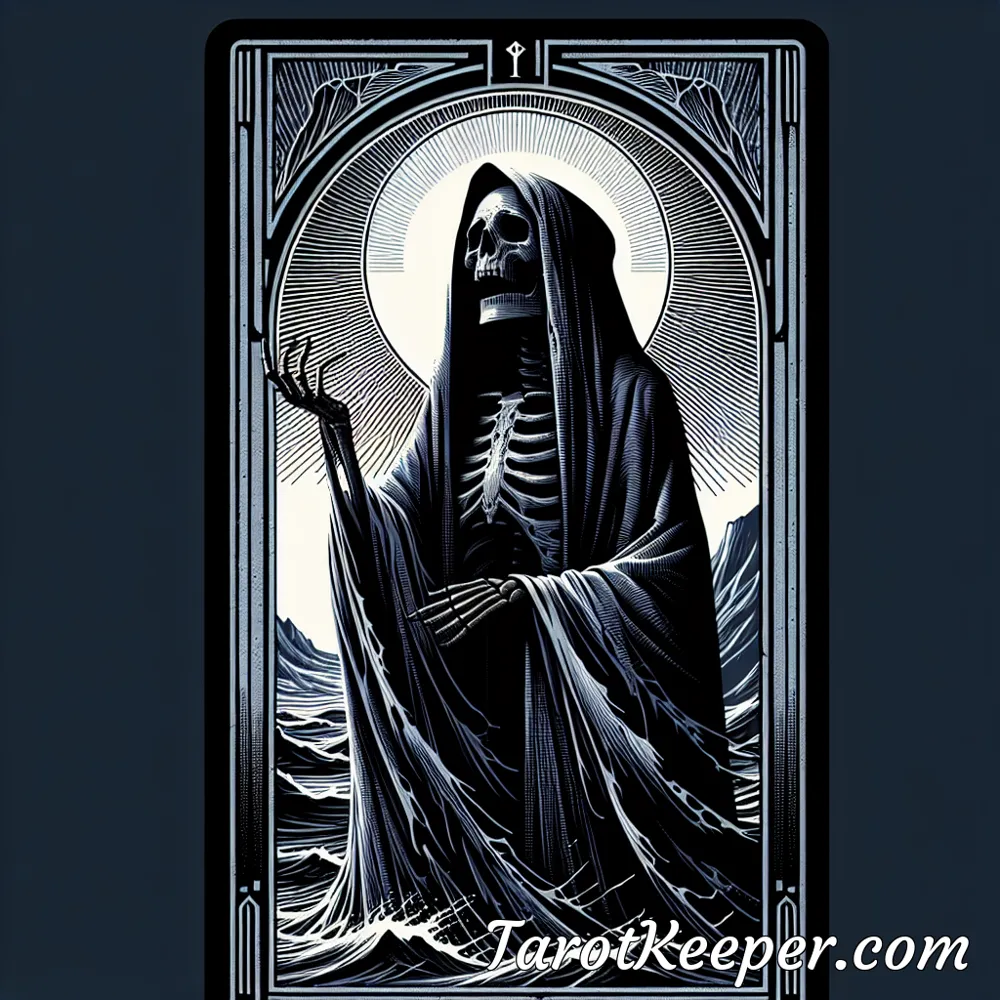


Death is a concept that has captivated human imagination for centuries. In many cultures and belief systems, death is personified as a figure, often depicted as a skeletal being or a cloaked figure wielding a scythe. This personification of death has been a prominent symbol in art, literature, and mythology, and has also found its way into the realm of Tarot reading. In this article, we will explore the symbolism and significance of death as a person in the context of Tarot cards.
Death is the 13th card in the traditional Tarot deck, and its imagery typically depicts a skeletal figure mounted on a horse, wielding a scythe. This card often evokes fear and anxiety due to its association with mortality and the end of life. However, in the context of Tarot reading, the Death card carries a deeper, more nuanced meaning.
When interpreted in a Tarot reading, the Death card symbolizes not physical death, but rather transformation, change, and rebirth. It signifies the end of one phase of life and the beginning of another. The figure of death in the card represents the inevitability of change and the transformative power that comes with letting go of the old to make way for the new.

In some Tarot decks, the Death card is personified as a hooded figure, often depicted as a skeletal being or a cloaked figure. This personification serves as a visual representation of the concept of death, embodying the mystery and the unknown that surrounds the end of life and the process of transformation. By personifying death, Tarot cards bring a tangible form to an abstract concept, making it easier for individuals to connect with and understand the deeper meanings behind the card.
When Death appears in a Tarot reading, it serves as a guide, urging the individual to embrace change and let go of what no longer serves them. It encourages the seeker to face their fears, release old patterns, and be open to the possibilities that come with transformation. Instead of signaling an impending physical death, the Death card invites the individual to embark on a journey of self-discovery and renewal, shedding old beliefs and behaviors to make space for growth and evolution.
As a personified figure in the Tarot, death challenges the seeker to confront their resistance to change and embrace the inevitability of transformation. It serves as a reminder that change is an integral part of life and that by letting go of the past, one can pave the way for new opportunities and experiences. The personification of death in the Tarot encourages individuals to approach change with acceptance and courage, understanding that it is a natural and necessary part of their journey.
Just as the seasons transition from winter to spring, the Death card in Tarot signifies the cyclical nature of life and the concept of rebirth. It represents the potential for new beginnings and the opportunity to break free from stagnation. By embracing the transformative energy of the Death card, individuals can harness the power of reinvention and renewal, shedding old layers to reveal their true essence and potential.
Personifying death in the Tarot also prompts individuals to confront their fear of the unknown and the process of change. By visualizing death as a figure, seekers are encouraged to explore their relationship with mortality and the impermanence of life. This confrontation with fear allows individuals to gain a deeper understanding of their own mortality and to cultivate a sense of gratitude for the present moment, knowing that each ending paves the way for a new beginning.
Through the personification of death in the Tarot, individuals are guided to practice acceptance and surrender in the face of change. The skeletal figure or cloaked being represents the inevitability of transition and the need to release control over the outcome. By embodying the essence of death as a person, individuals can learn to gracefully surrender to the natural flow of life, trusting in the wisdom of the universe and the transformative power of letting go.
In conclusion, the personification of death in the Tarot serves as a powerful symbol of transformation, change, and renewal. By embodying death as a figure, Tarot cards invite individuals to confront their fears, embrace the inevitability of change, and surrender to the transformative process. Instead of instilling fear, the Death card offers a message of hope and empowerment, encouraging seekers to welcome the cycle of life and death as a natural and essential part of their journey.
As we delve into the symbolism of death as a person in the context of Tarot reading, we gain a deeper appreciation for the transformative power of the Death card. By personifying death, Tarot offers a tangible representation of change and renewal, guiding individuals to embrace the cyclical nature of life and the potential for rebirth. Through the personification of death, individuals are encouraged to confront their fears, accept the inevitability of transformation, and surrender to the mysteries of the unknown, ultimately paving the way for new beginnings and personal growth.
Have questions or need guidance? Reach out to us anytime at [email protected]
We're here to help you on your tarot journey.
© Copyright 2024 by TarotKeeper.com. All rights Reserved.